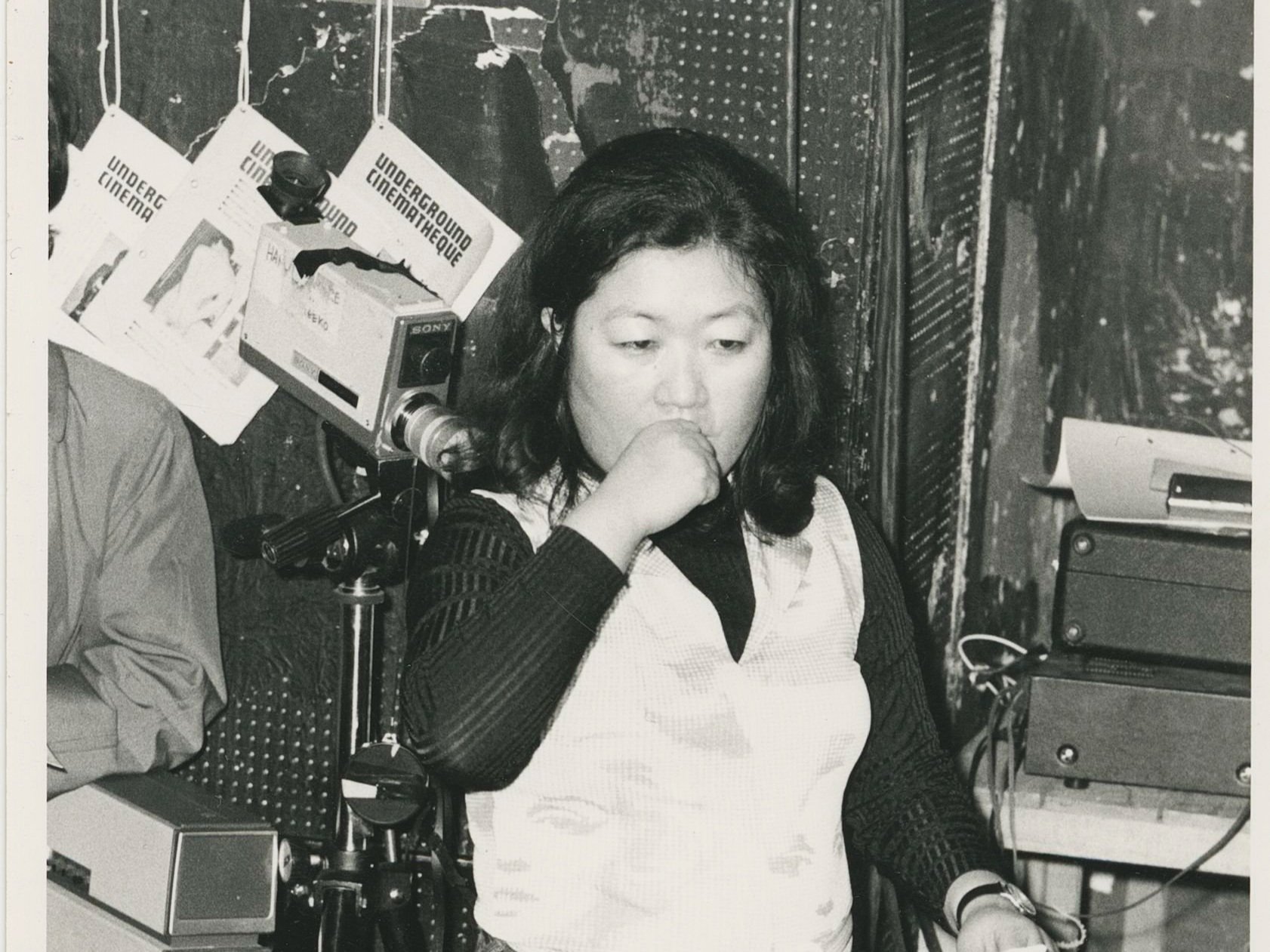
Shigeko Kubota
Shigeko Kubota
Shigeko Kubota (1937–2015) was an avant-garde artist whose works spanned video, sculpture, performance, and text, as a pioneer of video art.
Beginning her career in Japan, Kubota moved to New York in 1964 along with fellow artist Mieko Shiomi, due to her belief that her work was not receiving proper attention in Japan and will not improve in the future. Having seen a 1962 performance by John Cage in Tokyo and becoming acquainted with Yoko Ono, she began to correspond with George Maciunas while still in Japan, and in New York became a key organizer for the Fluxus movement, dubbed by Maciunas as its “Vice Chairman.” Kubota became a fixture of the Fluxus community, participated in various Fluxus events including her infamous Vagina Painting (1965) and produced her own Fluxus objects. Kubota also became a member of experimental music group Sonic Arts Union.
In the early 1970s, Kubota began exploring video as a new media, and her practice bore video sculpture, which unified video and three-dimensional sculptural forms. Her first experiments with a video camera were manipulated close-up self-portraits, made using the newly invented Paik/Abe Video Synthesizer while she, Paik, and artist Shuya Abe were teaching art CalArts in 1970-71. Her relationship with Nam June Paik developed into a marriage in 1977, and was married for thirty-years. Her major video sculpture series includes Duchampiana, and body of works referencing Japanese spiritual traditions of nature and landscape. In parallel, she evolved her autobiographical series of single-channel pieces entitled Broken Diary.
Kubota also acted as a go-between, reporting on the underground art scene for Japanese periodicals such as Bijutsu Techo, and curating exhibitions facilitating artistic exchange, such as the 1974 exhibition Tokyo-New York Video Express in Tokyo, a collaboration with Video Hiroba. In 1974 Kubota founded the video program at Anthology Film Archives at the request of Jonas Mekas, and from 1974 to 1982 served as its first Video Curator, and was instrumental in showcasing emerging video art.
Kubota’s practice often touched on aspects of identity, subjectivity, and social relations in American life. From 1972-3, she formed the coalition Red, White, Yellow & Black, composed of artists of four different racial identities, along with Mary Lucier, Cecilia Sandoval, and Charlotte Warren. In 1973 Kubota lived for a month with a Navajo family (that of Cecilia Sandoval) in Chinle, Arizona, where she discovered “video’s paradoxical quality as both a distancing device and tool for self-examination,” and made the work Video Girls and Video Songs for Navajo Sky.
https://www.shigekokubotavideoartfoundation.org/
